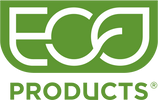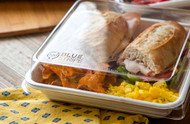Breaking Down the Raw Materials that make Eco-Products Foodservice Packaging: Post Consumer Recycled (PCR) Materials
Sep 2nd 2025
Eco-Products offers a variety of products that balance environmental, performance, economic, and market needs. Our bundle is divided into three product lines defined by raw material types and end-of-life potential. In this article, we will dive into our BlueStripe line of products that are made with post-consumer recycled content (PCR).
Producing foodservice products made with post-consumer recycled content helps support recycling systems by creating end-market demand for recycled materials that might otherwise be landfilled and reduces the amount of traditional virgin plastic needed for these items.
Raw Material
Post-consumer recycled content (PCR) is material that:
- has been used by consumers in some fashion
- has been recovered by the recycling system
- has been repurposed into a new item
The raw materials we use for PCR content in our BlueStripe line are post-consumer recycled plastic or paper, including recycled polyethylene terephthalate (rPET), recycled polystyrene (rPS), and post-consumer fiber (PCF).
PCR vs PIR
“Post-consumer” recycled content is different from “post-industrial” recycled (PIR) content. PIR, also known as pre-consumer recycled content, refers to waste materials that are generated during the manufacturing process and recycled into new materials. PIR is not to be confused with production scrap or material reprocessed on site, which cannot be claimed as recycled content since this material is normally reused within the original manufacturing process and would not normally have entered the waste stream.
Because PIR is typically made from clean, mono-material streams and therefore tends to be high quality, the market for PIR is already strong. By contrast, many organizations are working to prioritize demand for post-consumer recycled content (which comes from finished goods that have been used and discarded by consumers), for which end-markets are not as strong.
Raw material types and end-of-life potential
To learn more about all raw materials that make our products, visit www.ecoproducts.com/materials
To review annual updates of the beginning-of-life certification status of the raw materials used to make our products review our annual Impact Report at www.ecoproducts.com/impact-report
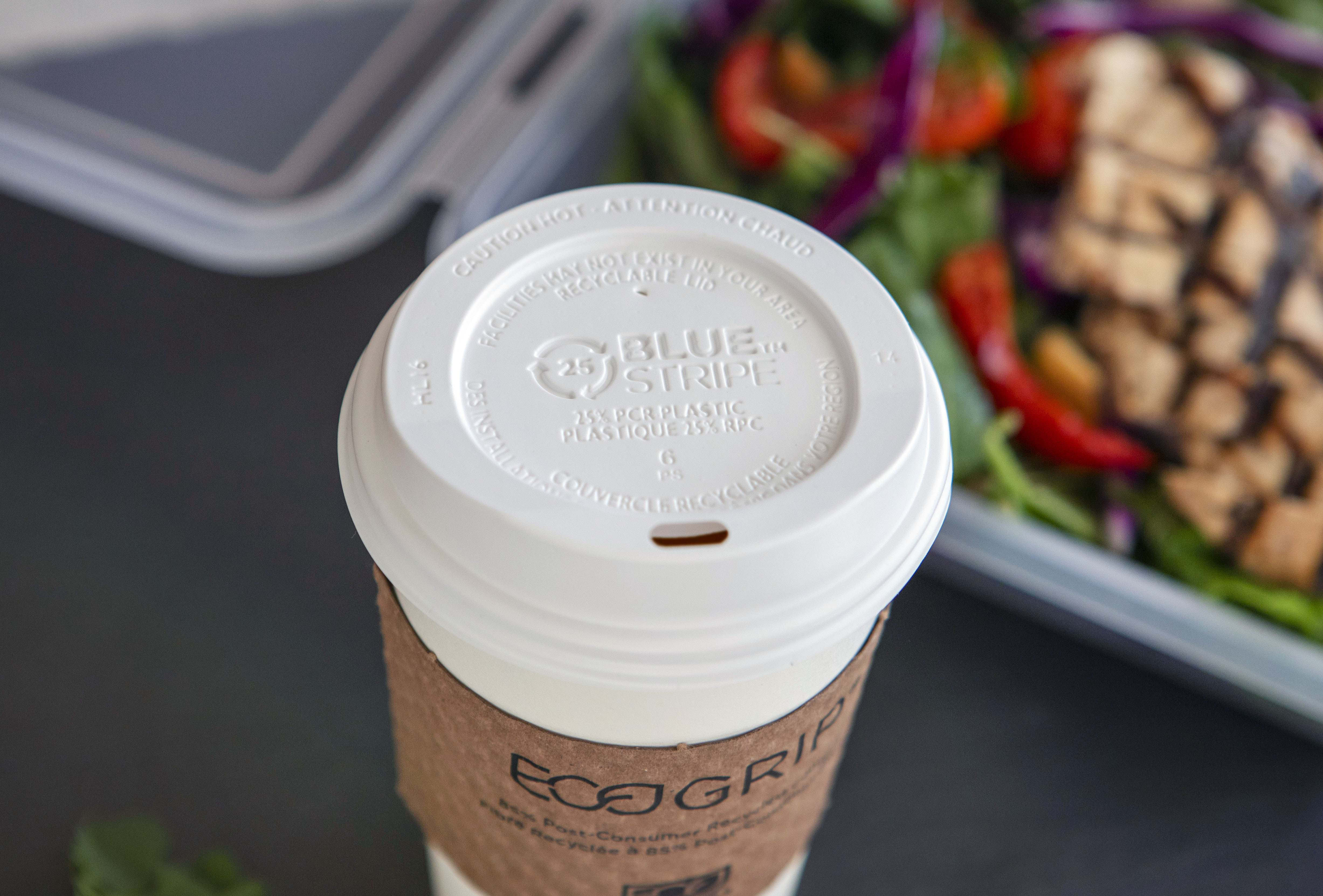
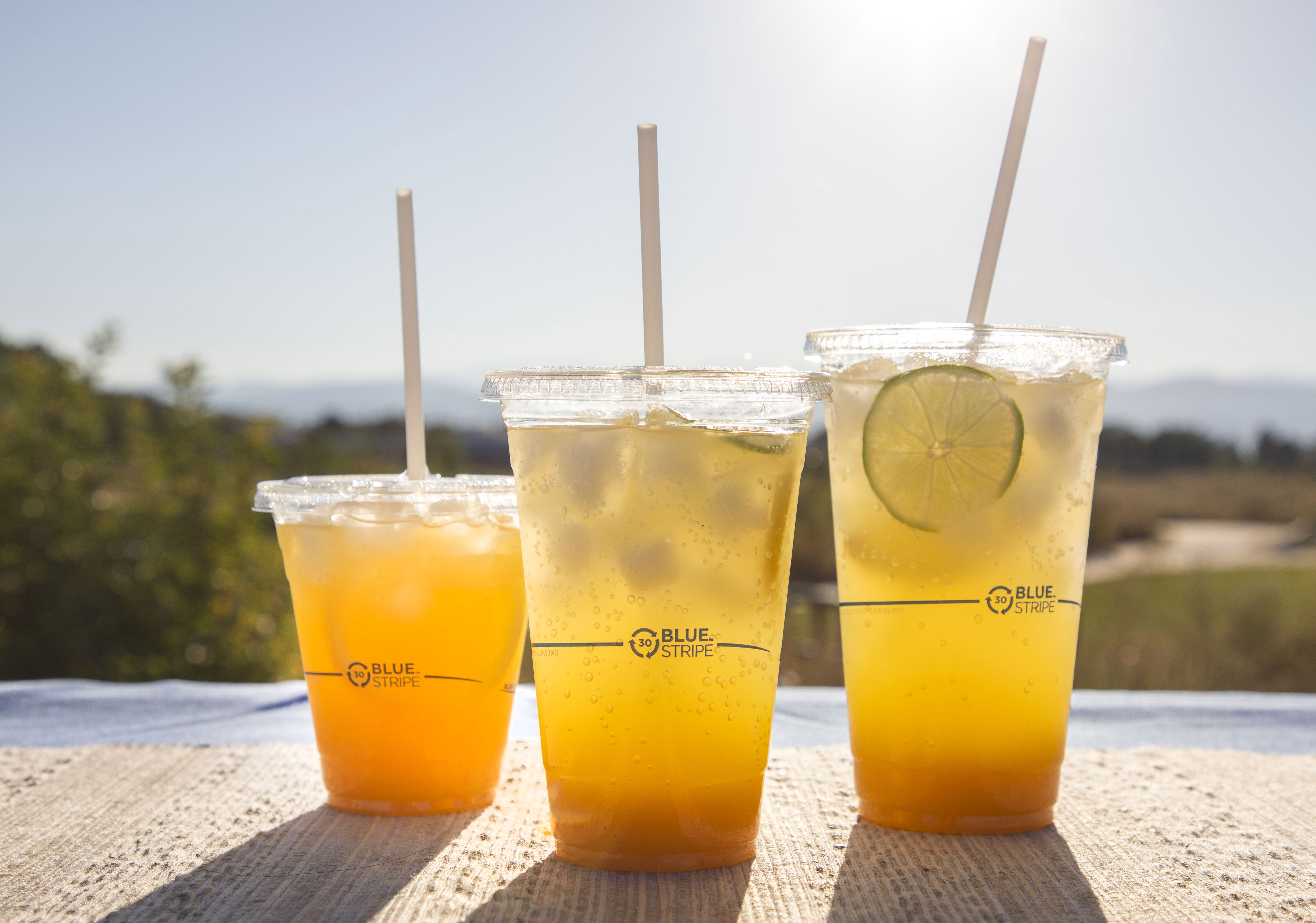
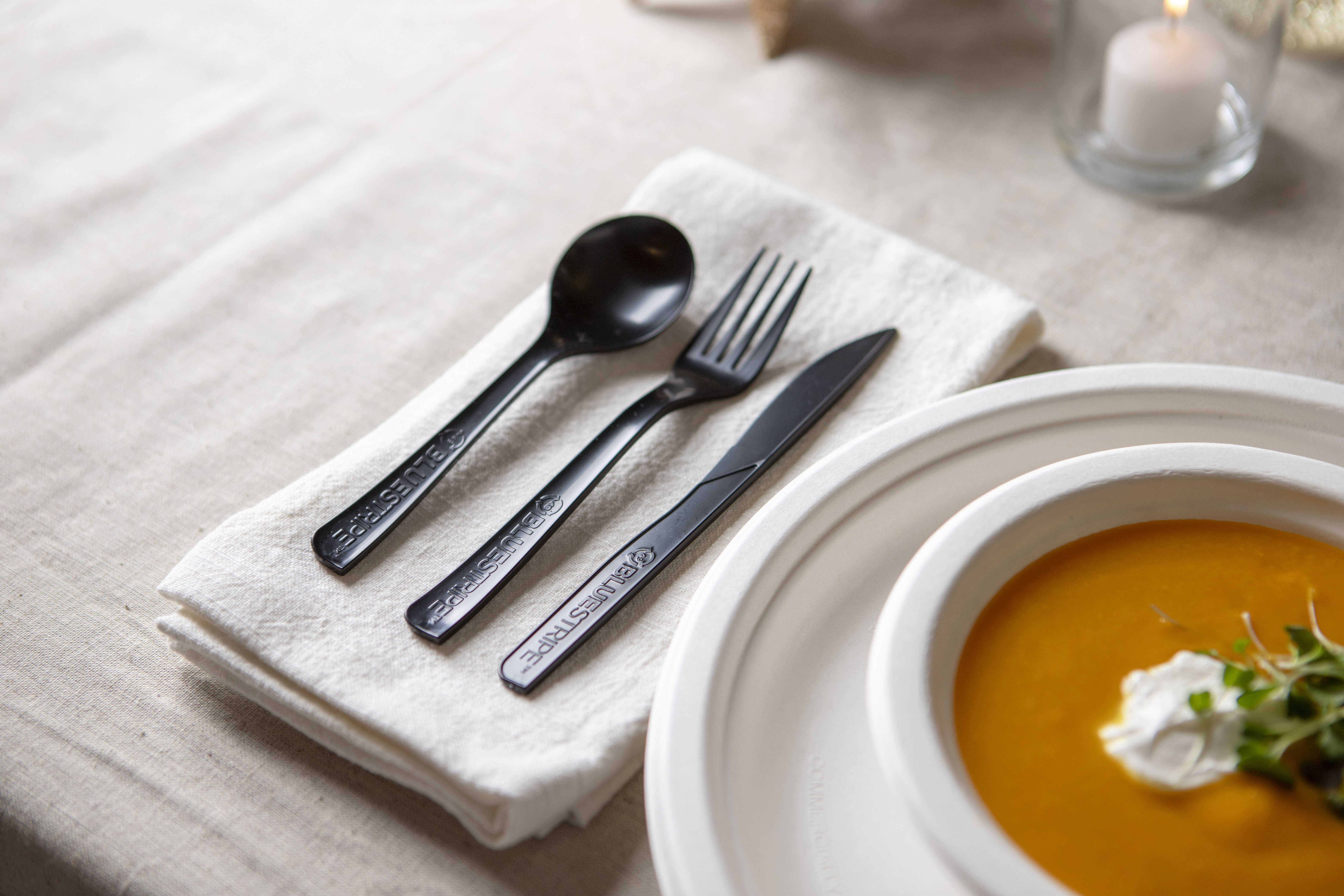
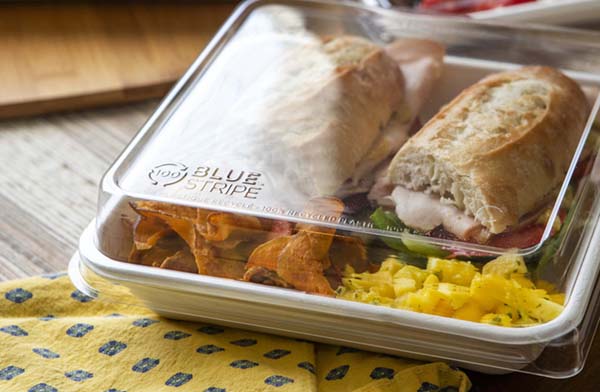
Beginning-of-Life Certification Options
While our products already deliver meaningful environmental benefits, we remain committed to going further. We’re working to better understand how our principal raw materials are sourced so we can assess their full environmental impact. In 2024, the beginning-of-life (BOL) certification for products using rPET and rPS maintained recycled content certification from SCS Global. In 2024, 5% of raw materials used to make our products were from post-consumer recycled content.
Product Attributes and Characteristics
BlueStripe is our line of products made with post-consumer recycled materials. We incorporate the highest possible percentage of post-consumer content without compromising product performance, with recycled content ranging from 24% to 100%. The percentage of post-consumer content varies depending on the size and shape of the container, as these factors influence how much recycled material can be used while maintaining performance. If a product is made with less than 100% PCR content, the rest of the material is blended with the virgin source of that material.
The product types we offer in our BlueStripe line include cups and lids, container lids, and cutlery:
- BlueStripe Hot Cup Lids: made with 25% post-consumer recycled polystyrene (rPS)
- BlueStripe Cold Cups: made with 30% post-consumer recycled polyethylene terephthalate (rPET)
- BlueStripe Cutlery: made with 100% post-consumer recycled polystyrene (rPS)
- BlueStripe WorldView Lids: made with 100% post-consumer recycled polyethylene terephthalate (rPET)
In 2024, we also began trialing 25% post-consumer recycled product sleeves used for products manufactured in the Novolex facility in Chattanooga, Tennessee. Read more about this project at this story.
Product Attributes
BlueStripe products might be a good fit for you if you don’t have access to commercial composting, you require a clear, heat-tolerant lid for our WorldView line of products, or if you’re looking for a product that uses less virgin plastic. Data from LCAs performed by the Novolex teams shows emissions typically decrease in the raw material phase of a product’s life cycle as PCR material utilization increases.
End-of-Life (EOL)
The end of life (EOL) recovery option for our BlueStripe line of products varies. We are working to better understand the end-of-life processing for our BlueStripe products, with the potential to give these materials more lives. For now, BlueStripe products can go in the landfill bin, but may be recyclable depending on your community’s capabilities.
It is important to note that BlueStripe products are NOT compostable and should never be placed into a compost collection bin. In 2024, we rebranded our BlueStripe line of products to help reduce the confusion with our GreenStripe compostable lids and reduce contamination in compost streams. This rebrand included removing “Eco-Products” logo on BlueStripe products to help signify that these products are non-compostable. Learn more about the BlueStripe rebrand at this story.
